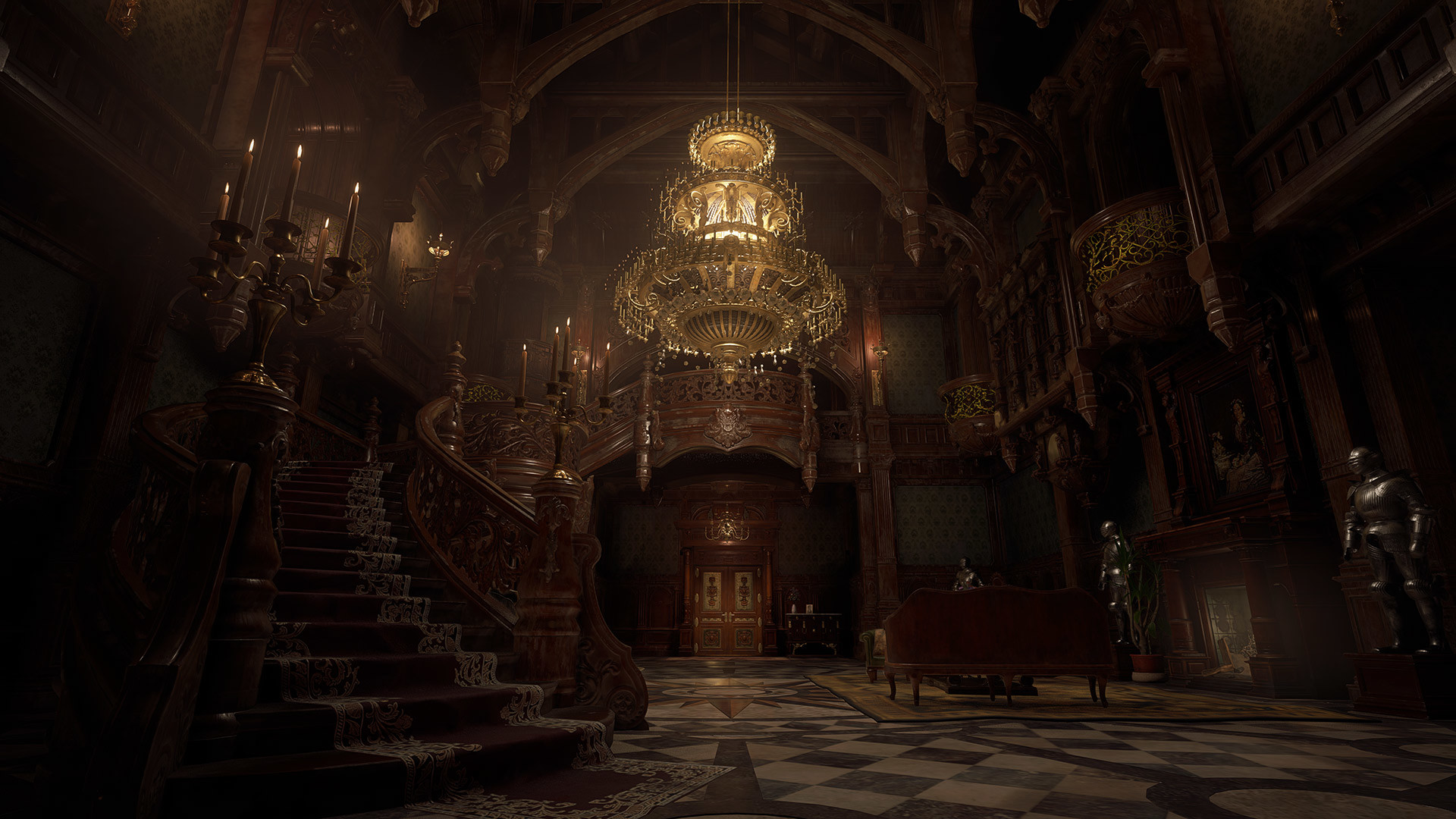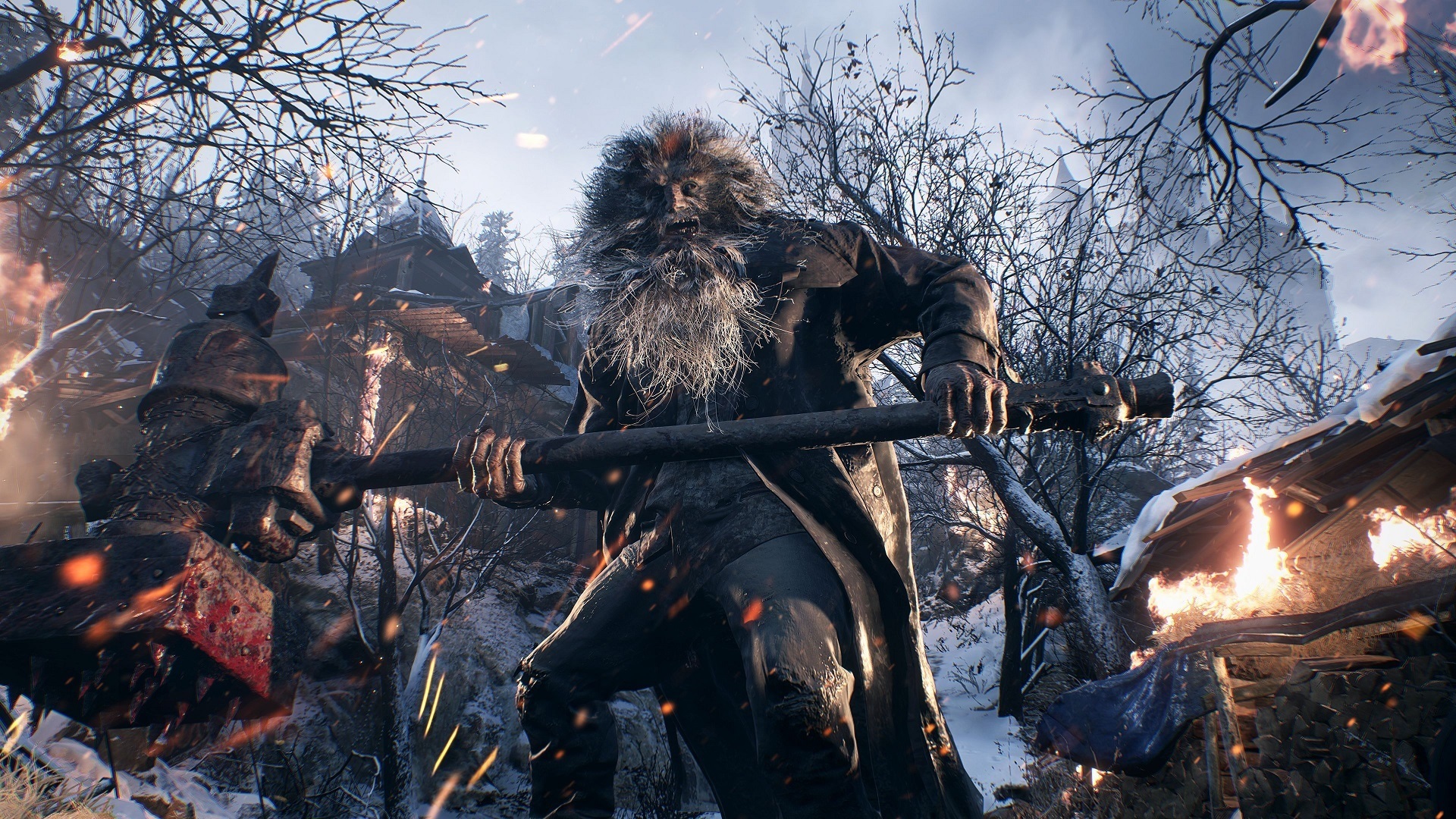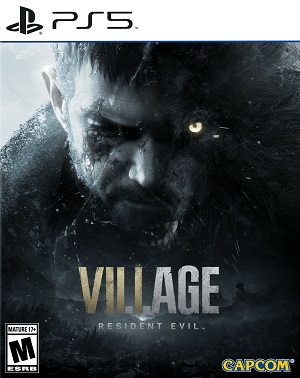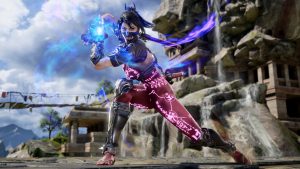
[drop-cap]R[/drop-cap]esident Evil Village, the eighth mainline title in Capcom’s franchise is this month’s biggest game. Previously, it had been rumored to have been a ninth-generation exclusive on account of the massive improvements to visuals and scale compared to Resident Evil 7. However, as we’ve seen recently, Resident Evil Village is set to be a cross-gen title with support for everything from the ancient base Xbox one on up to the PlayStation 5 and Xbox Series X.
When it arrived in 2017, Resident Evil 7 was something of an eighth-Gen technical showcase. It leveraged the strengths of both the PlayStation 4 and Xbox One to great effect. The cramped interior environment were limited in scope but took the load off the consoles’ weak processors. Instead, the RE Engine focused on moment to moment, up-close visuals, with high fidelity models and spectacular material work. To top things off, Capcom aimed for and largely achieved a lock on 1080p/60 on both the PlayStation 4 and Xbox One. At a technical level, Resident Evil 7 was an example of eighth-gen gaming done right: great visuals and atmosphere without compromising on performance.
Resident Evil Village comes out right at a time when eight gen consoles are pretty much outdated tech wise, with the PlayStation 5 and Xbox Series X already out on the market for months. In some ways, it’s launch mirrors that of Resident Evil 4, coming out right at the end of a generation, with Capcom leverage years of platform expertise to deliver better visual than you’d think those aging machines were capable of. In early 2005, with the Xbox 360 months away, Resident Evil 4 delivered a taste of seventh-Gen gaming on platforms like the GameCube and PlayStation 2, with high fidelity models, animated hair, dynamic light, and volumetric particle volumes. Here in 2021, we’re seeing Capcom doing something similar. Yes, Resident Evil Village is a cross-gen title. But it’s also Capcom taking their optimized Resident Evil 7 engine, dialling things up to 11 and delivering truly impressive visuals on everything from the base Xbox One on up. How does it stack up compared to its immediate predecessor, though? Let’s take a look!
Character models
Resident Evil 7 already offered up high fidelity character models. Each member of the Baker family was rendered flawlessly with polygon counts in the high five figures. Barring some of Naughty Dog’s work and the God of War reboot, these were easily some of the most detailed character models we’ve seen this entire generation. Skin rendering was a strong point, with Capcom’s great SSS implementation realistically depicting NPC skin in reaction to ambient light. Resident Evil 7 has impressive hair rendering for the time, but eighth-Gen constraints meant that Mia and other characters often wound up with a case of “spaghetti hair,” too sparse and broad.
Resident Evil Village takes the strengths of Resident Evil 7’s character rendering approach and elevates things. Dimitrescu has taken up the lion’s share of coverage about Resident Evil Village characters. While she’s super tall, what’s more impressive is the amount of detail Capcom’s managed to add to her character model and those of other key NPCs revealed so far. It’s a clear step up from Resident Evil 7. We’re looking at higher poly-counts and better quality hair rendering. More importantly, though, incidental objects, like clutter and items on desks receive a major boost to fidelity. The great characters ate up most of Resident Evil 7’s polygon budget. But here, we see more of a ninth-gen orientation, with incidental objects getting a level of care that’s simply missing in the previous game, without compromising on the characters themselves.
World and Environment
Resident Evil 7 was set in a single (well, technically two) sprawling houses on the Baker family estate. As the name suggests, however, Resident Evil Village is considerably larger in scope, set in what appears to be a remote village in Romania. Exterior environments were a weak point for Resident Evil 7, though not necessarily for the RE Engine itself – Monster Hunter Rise being a recent case in point. In Resident Evil 7, the few exteriors available were tightly confined corridor-like spaces. This was a necessary compromise, considering the game’s visual quality and performance profile. Resident Evil Village, on the other hand, opens things up considerably, with what’s effectively a mini open world.
While there is, of course a lot more hand-holding and barred off areas than you’d see in the likes of Red Dead Redemption 2, this is a big move forward for the Resident Evil franchise. The open world structure also means that side quests are coming to the game, which could considerably increase length and replayability. Resident Evil 7 was a singularly focused experience. However, this led to playtimes as low as 8 hours, not factoring in DLC. A broader experience would be a welcome experience, though Capcom will have to balance quality with bloat – something that didn’t happen with 2012’s Resident Evil 6.
Lighting, Effects, and Post-Processing
Resident Evil Village’s wintry village environment makes for a qualitatively different visual milieu compared to the decaying bayou in Resident Evil 7. This has a tangible impact on Capcom’s artist direction with regards to lighting and effects, as well as technical implications.
Resident Evil 7 made frequent use of volumetric particles for its dust, soot, and general murkiness. This was something that contributed greatly to the game’s visual appeal. Most lights were dynamic, but this was viable from a performance perspective because of the environment – mostly poorly-lit interiors. With Resident Evil Village, there’s a much greater emphasis on exterior environments. And while houses and underground areas are as oppressively disgusting as we’re used to from RE, wintry outdoor areas have a “clearer” look, for lack of a better term. Sky lighting is a new feature here, with the skylight appearing to cast dynamic shadows in exterior scenes. This likely contributes to the massive performance differential on eighth-gen consoles between Resident Evil Village and Resident Evil 7. The end results are, however, frequently spectacular. Resident Evil Village incorporates ray-tracing. However, the effect is fairly subtle. We’re looking at a combination of ray-traced global illumination and ray-traced reflections. The global illumination adds a layer of depth to indirect shadows, above and beyond what the game’s already-capable ambient occlusion implementation manages: this accentuates the atmosphere in interiors, as do the ray-traced reflections.
Compared to Resident Evil 7, Village pares back post-processing effects. It’s not so much that they’re absent as it is an aesthetic choice: film-grain, light bleed and other effects were all part of Resident Evil 7’s visual set, evoking found-footage films. Village, on the other hand, opts for a tamer post-process pipeline, something that adds to image clarity on a scene-to-scene basis.
Conclusion
Resident Evil Village is a cross-gen title, but at first glance, it’s a clear step above the visual quality we’re used to on eighth-gen platforms. Capcom appears to have wrung every drop of power out of the aging PlayStation 4 and Xbox One to deliver visuals that wouldn’t look out of place in a launch-day ninth-gen title. This doesn’t mean that the next-gen platforms haven’t received love. Apart from improved performance, ray-tracing is a subtle, yet significant improvement. In the years to come, we expect Resident Evil Village to be something of a visual benchmark to measure future ninth-gen titles against.



















Share Your Thoughts Below (Always follow our comments policy!)